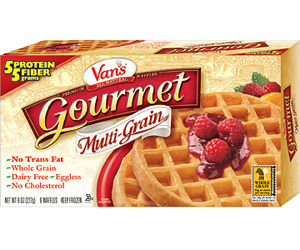Since I’ve experienced a significant reduction in my PMS sytmptoms and had a noticable difference in my hair re-growth, I have come to accept nutrient-dense beef liver one of the staples in my diet. Rather than treating my thinning hair and severe PMS as unfixable and unfortunate genetic gifts that I was just going to have to live with, I’ve recognized these annoying traits as important messages from my body. As a reward for paying attention, my body has responded with thicker hair and a better mood.
What’s amazing to me is how the body knows to prioritize these sacred nutrients. Now that I realize that it takes nutrients to make the systems of the body work together (something that I had always just taken for granted before), I can understand that my life-giving organs (heart, lungs, etc) and my life-making organs (uterus) take what they need while somehow my body knows that I will survive another day if my hair health and happiness level remain unattended for a while.
What’s beautiful about my Paleo journey is that I can apply it to the adorable bundles of genetic material sitting at the breakfast table with me every morning. Feeding their bodies fresh pastured eggs and fresh fruit gives me a sense of pride and relief that they are getting a host of nutrients that will power them through their day and give them a better foundation of overall health. I recognize that their bodies and minds are developing faster than I can keep nutrient-dense foods in them, and with unlimited funds and energy, I’d be giving them the cleanest, pastured-raised and most nutrient-dense proteins alongside locally grown, organic fruits and vegetables.
What’s puzzling to me about the food industry is how foods that we were not designed to eat (grains, legumes, and even dairy) end up in packages containing messages of health and nutrition for those who consume them. Bagels and cereal are disguised as food when really they are the opposite of health. All grains contain anti-nutrients, and as you may have guessed by my recent love-affair with nutrients, they are something that I want nothing to do with. In fact, I’m hoping that this post gets you seriously thinking about replacing your nutrient-deficient bowl of cereal with a nutrient-rich scrambled egg.
So what is an anti-nutrient and why is it so bad?
From the What is Paleo? page on this site: It is important to think of grains as a plant that lives in the wild and must defend itself from predators like any animal would. Grains and like plants use toxins called anti-nutrients (lectin, gluten, phytates) to protect themselves from being eaten. That is why they must go through extensive processing to be edible for humans. The heavy processing still leaves inflammatory agents in the grains that wreak havoc on our digestive systems, insulin regulation, and other bodily functions. Contrary to Conventional Wisdom, even whole grains are not healthy.
In addition, anti-nutrients do just what their name implies–they prevent the body’s absorption of these crucial vitamins and minerals.
Respecting the body and learning its signals is an important part of regaining our overall health. In our case, using the Paleo diet to restore nutrients to mine and Charlotte’s depleted systems, we enabled a healing process that is leading us out of a desperate situation. We’re not alone. A nutrient-rich Paleo diet has healed many broken and depleted systems.The internet is filled with Paleo success stories of individuals healing themselves from everything from Fibromyalgia to GERD.
Adding nutrients to improve Autism may be catching on. In this article on minimizing Autism incidence, posted by my friends Molly & Leah at A Ventography, nutritional deficiencies were listed as a critical component to treating Autism. And while I recognize that the causes and severity of Autism and related disorders are complex and vary from child to child, it doesn’t seem to make any sense to continue to feed our children and ourselves anything that would prevent the optimum absorption of nutrients.
I often say that we treated Charlotte’s Autism by treating it as a symptom of distress within the network of systems that is her body. All of the nutrients that she eats and the anti-nutrients that she avoids have given her body the ability to heal itself. As she grows and understands how food makes her feel, she will learn the valuable lesson of listening to and respecting her body’s capabilities and limits.
For more information on food politics and the over-production of grains, see part 4 of this HBO Documentary: The Weight of the Nation.
Click here for a video clip of Mark Sisson discussing the effects grains have on our bodies.




Thanks so much for the shout out! We couldn’t agree with you more… laying a nutritional foundation through diet is so key. We have many friends that wonder why the supplements and other autism treatments don’t work for their children when they are still shoveling skittles and McDonalds into their children’s mouths. As far as we are concerned, people are wasting their money on autism treatments if they don’t clean up their children’s diet first. Thanks for educating us on what an anti-nutrient is. -Molly & Leah
You’re welcome! I really appreciate all of the articles you post. Reading them always helps me connect the dots with our experiences.
Wouldn’t it be great if they put Surgoen’s General warnings on all foods. Something like: “Warning, eating this processed food item may cause bloating, gastrointestinal distress, digestinal inflamation and weight gain.” I wonder if that would curb the intake?
Yes, it probably would curb intake and decrease sales…that’s why you dont see it. Thanks for your comment 🙂